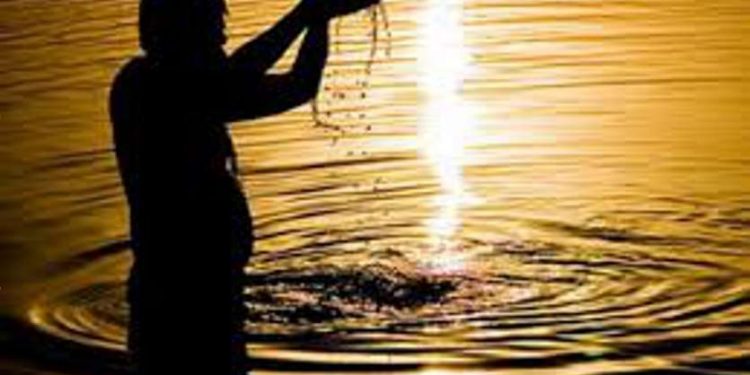According to Hindu almanac, Makara Sankranti, one of the most auspicious days of Hinduism, marks the Sun’s transit into Makara rashi i.e. the Zodiac sign of Capricorn. The sun starts its northward sojourn or Uttarayana indicating the beginning of the longer and warmer days from the day of Makar Sankranti. However, Makara Sankranti tentatively occurs January 14. Though most of the Hindu festivals are dictated by lunar cycle, Makar Sankranti follows solar cycle. Therefore, the festival of Makara Sankranti is dedicated to the Surya Dev (Sun God), the infinite sources of light and energy that are the preconditions of the creation and preservation of life on earth.
The festival Makar Sankranti is well connected with a number of mythological, spiritual, astronomical, social, agricultural and economic significances.
Legends of Makar Sankranti
Legend has it that a deity named Sankranti killed a demon named Sankarasur who perpetrated brutal tortures on people on the day of Makara Sankranti. The following day the goddess Sankranti slayed the demon named Kinkarasur.
Another mythological story relates that one day King Sagar’s sacrificial horse disappeared as Devraj Indra stole it in fear of the former to be more powerful than the latter if the Aswamedha Yajna (sacrificial ceremony of a horse) attained success. King Sagar’s 60,000 sons mistakenly accused Kapil Muni, son of Kardam Muni and incarnation of Vishnu, as the thief of the horse. The livid sage burnt them all to ashes. Then Bhagiratha, a legendary king of the Ikshvaku dynasty, after a thousand years of penance pleased the goddess Ganga and persuaded her to flow from the heaven to the earth for the redemption of 60,000 sons of King Sagar. Goddess Ganga descended on the earth on this propitious day of Makar Sankranti.
Harbinger of spring
Makara Sankranti festival is also considered as the harvest festival and the harbinger of spring. After harvesting is complete, celebrations in some parts of India are observed for days beginning from this auspicious day. On the other hand, in many parts of the country this period is the early stages of the Rabi crop and agricultural cycle. The day is celebrated with enthusiasm as arduous agricultural works like preparing seedbed and sowing seeds are already accomplished.
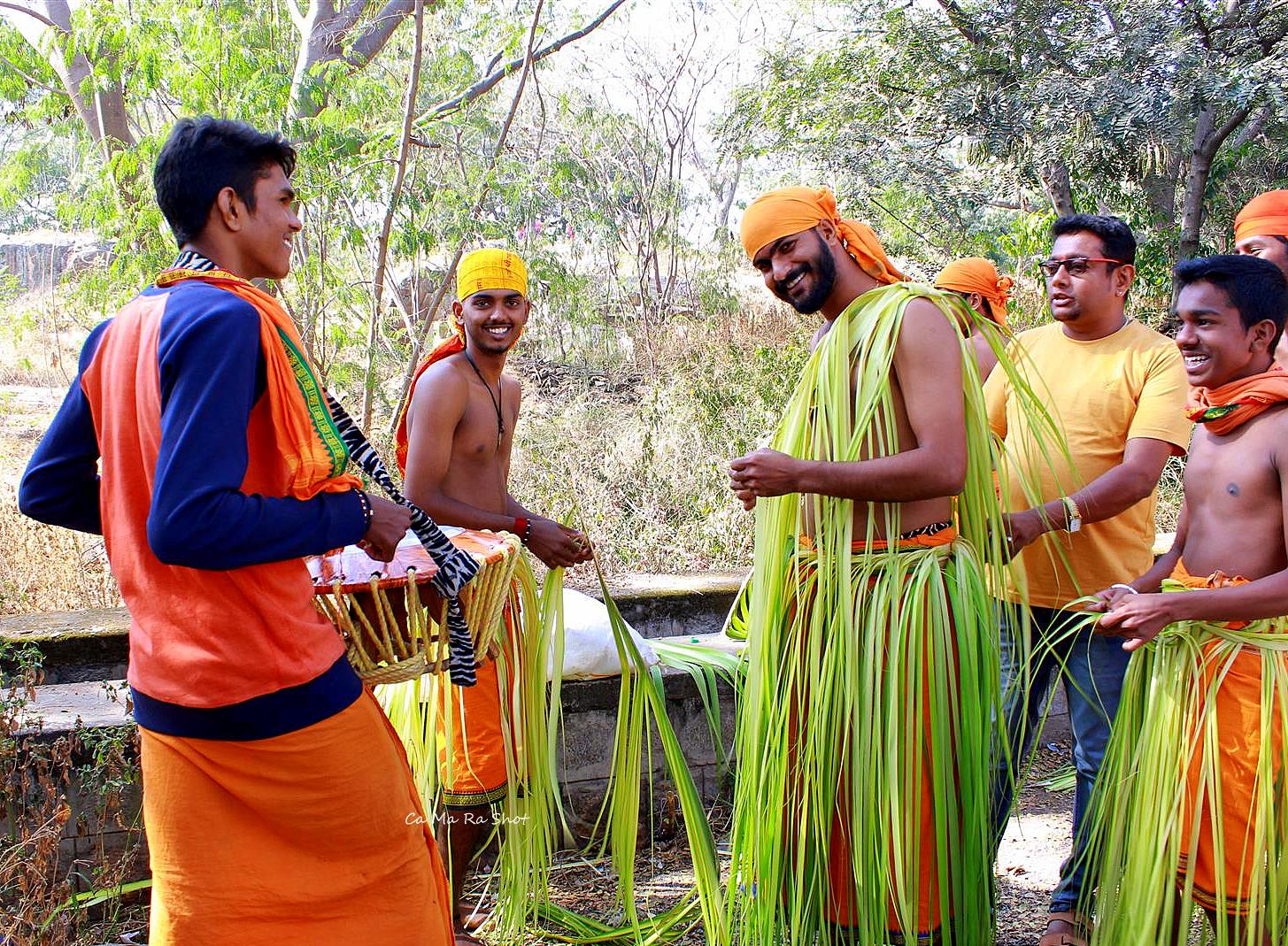
A day of bonhomie in Odisha
In Odisha, men and women are at large to choose one best friend for the span of a year. A male friend picked out by another male is called ‘Maharshad’ or ‘Marsad’, whereas, a female counterpart chosen by a female member is addressed as ‘Makarathe’. This tradition of strengthening the bond of friendship in Western Odisha is recognized as Basma. There is also the custom of tying friendship lace and greeting one another with offering ‘Mahaprasada’ of Jagannath temple of Puri.
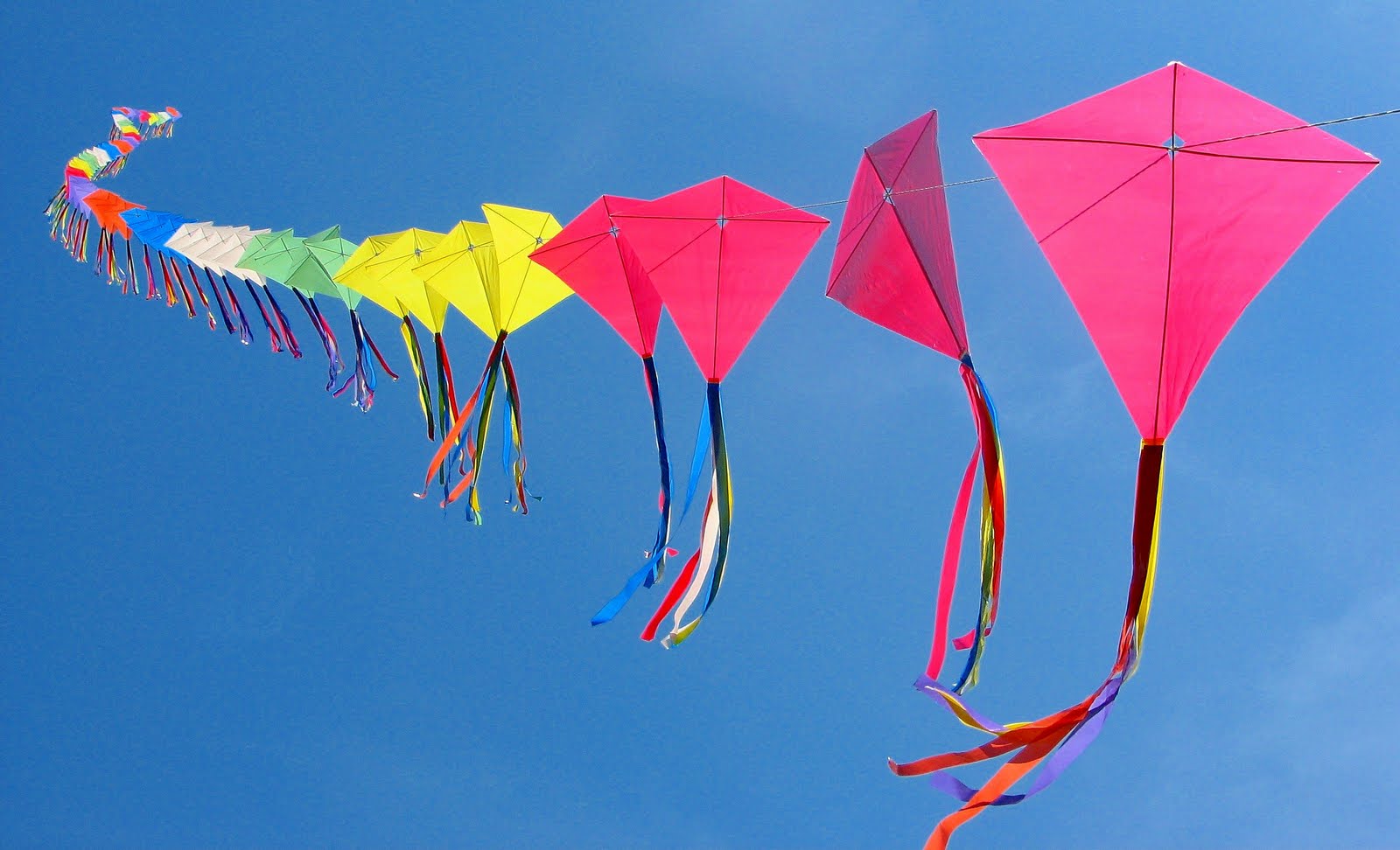
People also prepare ‘Makara Chaula’ (newly harvested uncooked rice) with the ingredients like sesame, molasses, jiggery, rasagolla, banana, coconut, dry fruits, cheese and puddings here. ‘Makara Chula’ is also offered as special kind of bhoga to Lord Jagannath. The great sage Kshyap according to Skanda Purana, observed the day to please Lord Jagannath. It is thought that Goddess Lakshmi returned from her parental home with ‘Makar Chaula’ to offer her consort Lord Jagannath and his siblings Balabhadra and Subhadra on three silver plates.
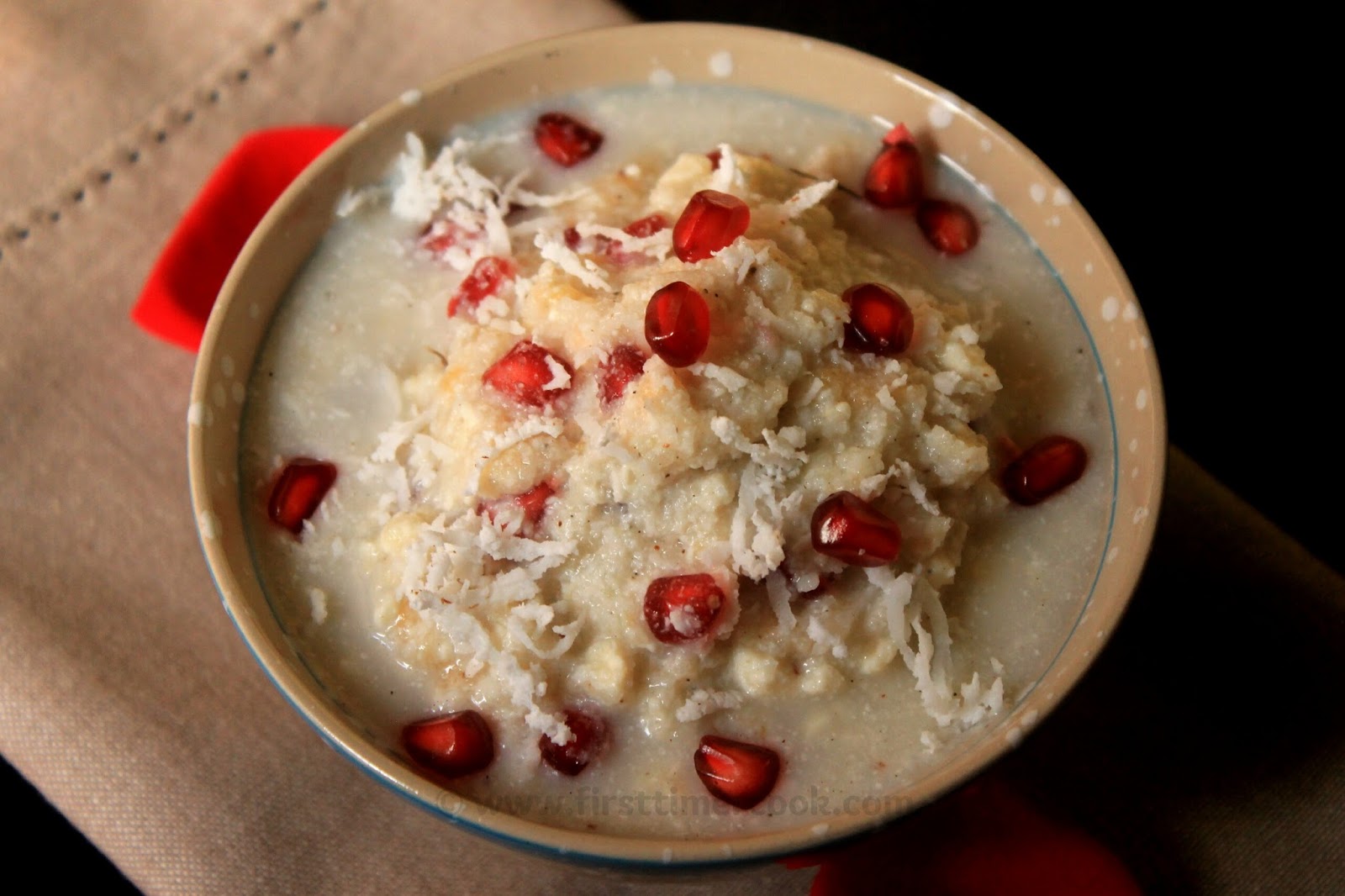
Throughout Odisha, Makar festival is observed with pomp and grandeur. Thousands of people throng in Sun Temple at Konark to witness the northward annual swing of the sun. Special rituals are observed in Jagannath Temple at Puri. Lord Jagannath is attired with two popular ‘Veshas’ (costumes) that are Nabanka Vesha and Makara Chaurashi Vesha on two consecutive days. Makara Mela is held at Hatakeshwar of Khordha, Dhabaleswar at Cuttack, Makara Muni Temple in Balasore. Besides, tribal population dominated regions like Mayurbhanj, Kalahandi, Koraput, Keonjhar and Sundargrh are not deprived of the fervour of the carnival.
Food fest
It is also known as a festival of delicious traditional food and desserts. Ladoos made of til-gur (sesame seeds bonded with jiggery) are distributed to keep our bodies warm in cold weather. Besides, sesame seeds are not only considered beneficial for our health but also consuming the oil extracted from them facilitates the avenue of spiritual attainment.
In Bengal, exotic delicacies like puli pitha made of the ingredients like rice flour stuffed with coconut jiggery mixture or chanchi (milk turned into thick paste called khoa after boiling) fills the houses with delicious fragrance. Besides, pati sapta, khshli and khira are other popular delicacies prepared and relished to celebrate the day.
A secular festival in Bengal
In tribal dominated districts of Odisha including Mayurbhanj, Keonjhar and Sundargarh the tradition of young girls belonging to Kudumi, Bastiti and in Purulia and Bankura districts of West Bengal, Tusu puja celebrating harvest adds extra flavour to the festival. Woman folks assemble in houses from the Agrahayan to Poush months according to Bengali almanac and sing Tusu songs in chorus. On the day of Makar Sankranti the celebration ends with the sailing of Bhelas (small house boats made of cork) in the river water. According to pundits, Tusu is a secular festival which is observed by people irrespective of castes, creeds, colours and economic and social statuses. Baram a folk deity of lower caste people is worshipped with the animal sacrifices in some districts of Bengal, too.
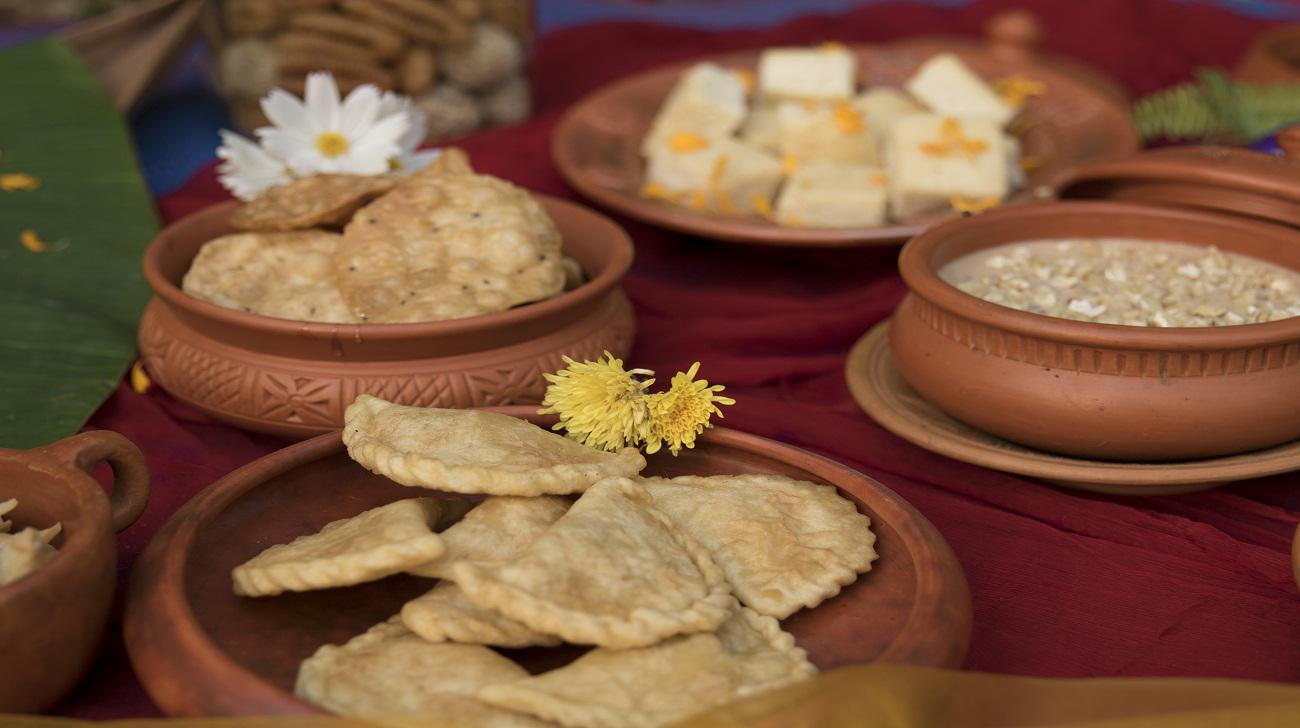
Arrangement of bonfire with the combustible waste materials like unused garments, straw, dry fire woods, shrubs etc is part and parcels of the festival in many provinces. There are competitions of the height of the soaring flames. The Ganga Sagar Mela, the second biggest fair after Kumbha Mela, is observed with surging enthusiasm in Sagardwip in West Bengal. On the day of Makara Sankranti thousands of pilgrims gather in the fairground to take a holy dip in the Ganges to sanctify their souls. People gather around the soaring flame of bonfire to enjoy the heat after Makara Snan in cold winter dawn before sunrise.
Another annual fair popularly known as Baul (folk song) fair or Jadever Mela, is organised on the occasion of Makara Sankranti in Birbhum’s Kenduli village on the bank of the river Ajay. The village Kenduli is named after Kenduli Sasan in Orissa, the birthplace of the great poet Jayadeva who composed Gitgovinda. Besides, innumerable fairs, Dharma Puja (worshipping a folk deity), Laxmi puja in open place are held in different parts of the country to celebrate the day.
Kite festival
Flying colourful kites by all and sundry on the occasion of Makara Sankranti is a popular ritual observed almost all over India and even many parts of the world. Though flying kite apparently seems a funny event, there is a strong scientific reason behind it. Exposure to the sun early in the winter morning while flying kites not only provides one with the opportunity of comfy basking but also produces vitamin D in one’s body. Needless to say, healthy exposure to the sun keeps away a lot of ailments caused by cold weather.
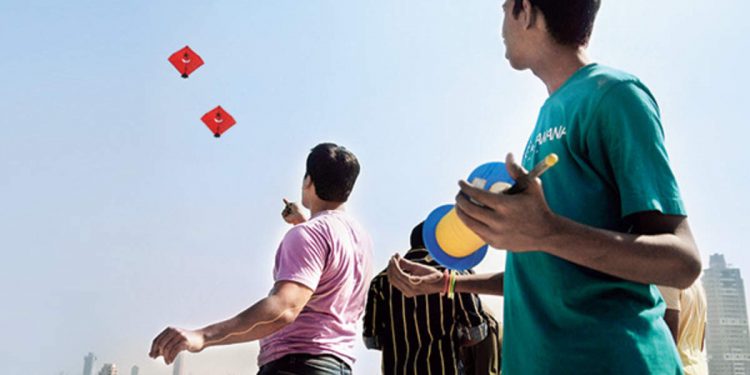
Pongal in Southern states
In Tamil Nadu the festival is known as Pongal. Sweet rice dish is cooked in new earthen pots. Cows and cattle that play important roles in agriculture are well-decorated and worshipped. The special attraction of Pongal in Tamil Nadu is Jallikattu, a traditional spectacle in which a bull is released into a crowd of people. The participants in the game attempt to grab the hump of the rampant bull’s back and hang on to it precariously. In Andhra Pradesh the festival is celebrated for days with the children showering specially to be blessed on the holy day.
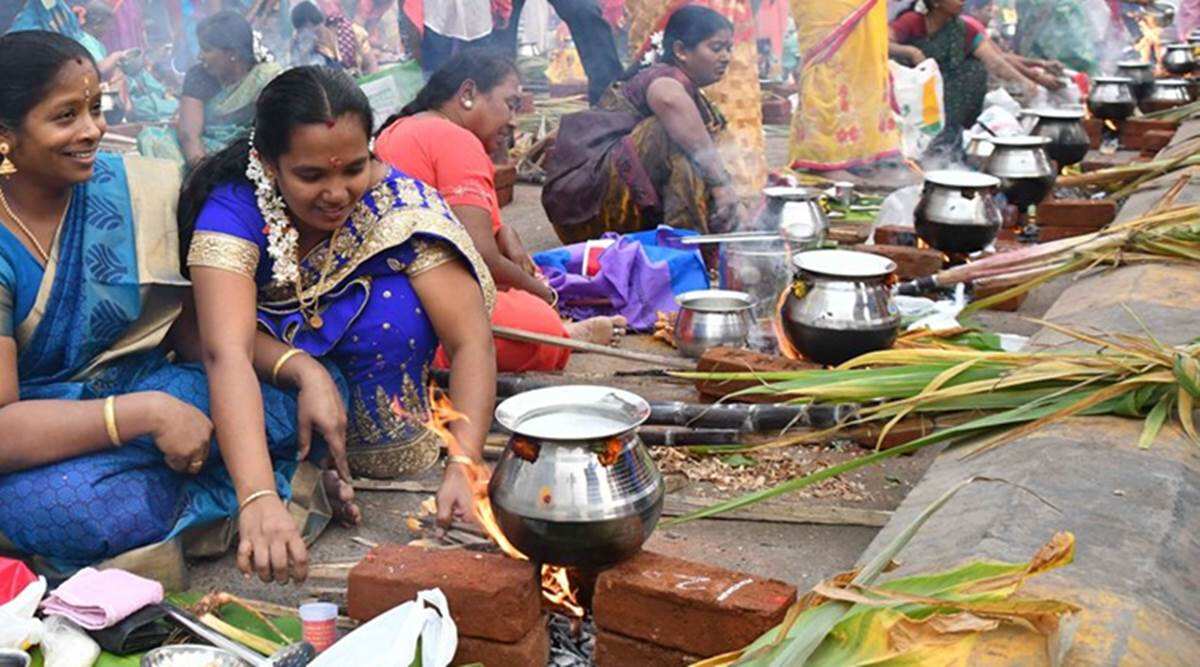
Lohri in North India
The day is observed in the name of Lohri in Punjab, Himachal Pradesh, Haryana and Jammu quite exotically. Children in Punjab roam about door to door singing songs. The lyrics of their songs are sung eulogising Dulha Bhatti, a saviour of the poor. Bhangra is displayed in the rhythmic beat of dhol (drum). Bonfires are also arranged with dry woods, straws and shrubs for informal disposal of burnable waste materials including old garments and materials as part of the celebration. In UP, Bihar, MP and Rajasthan the day is celebrated with much enthusiasm and pleasure. Sukarat by name the festival is celebrated in Rajasthan and Madhya Pradesh. Fairs are held and cattle like cows and camels that help in agriculture are decorated and worshipped on the day.
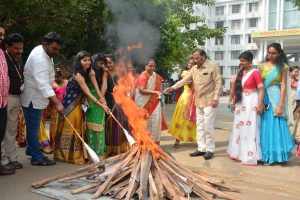
In Gujarat also cows are decorated and worshipped. They are fed with special grass and cooked Prasadam into the temple precincts. Kite flying competition called Pech Ladana is the most popular event during the festival. Thousands of people participate in the competition with colourful kites and winners are honoured befittingly. But in Maharashtra the festival is observed with the exchange of laddos made of sesame and jiggery.
Transcending national limits
However, Makara Sankranti festival transcends the boundary of Indian provinces and even the subcontinent, too. The festival is known as Maghi in Nepal, Sankran in Thailand, Pi-Ma-Lou in Laos, Thin-Yan in Myanmar and Mahasankran in Cambodia.
In the present pandemic situation, it is a grave challenge to the people of the country whether the auspicious days of Makar Sankranti festival can be observed without constraint.
Buddhadev Nandi

